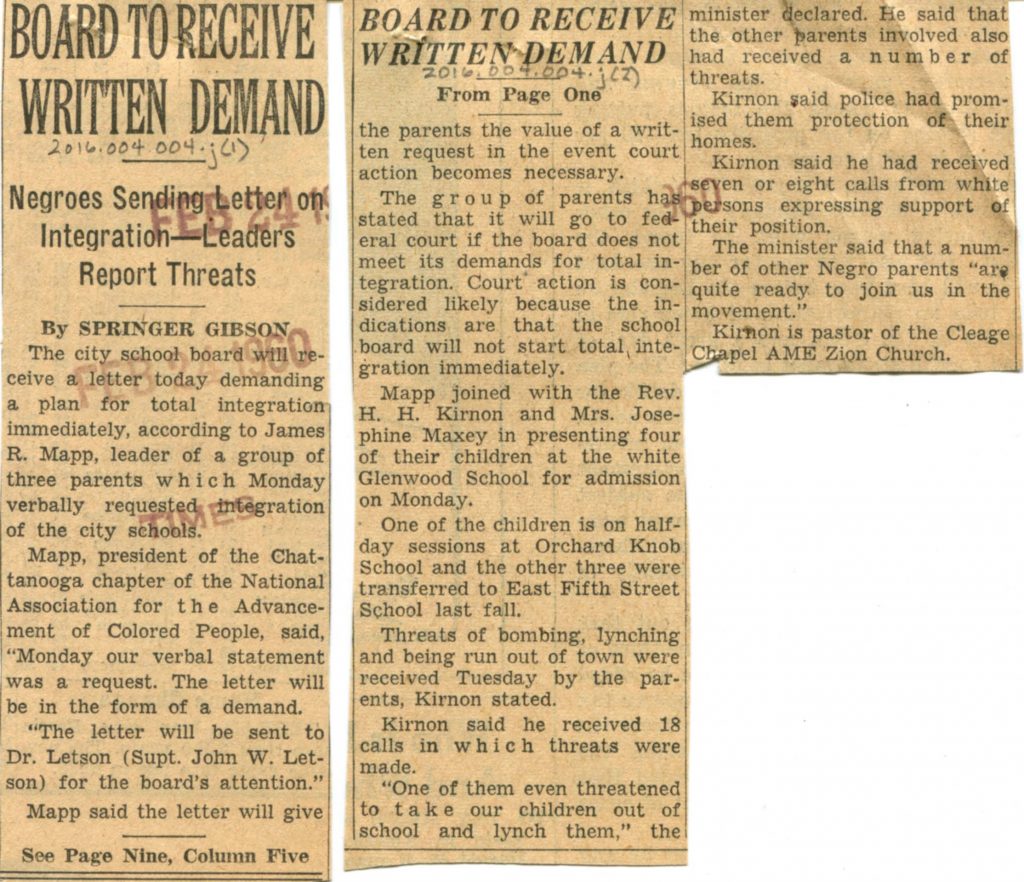This blog post was authored by Madison Beckner, a student in Professor Eckelmann Berghel’s HIST 3475: Modern Civil Rights Struggle class that curated an exhibit on display in the George Connor Special Collections Reading Room, located in room 439 of the University of Tennessee at Chattanooga Library in Spring 2019.
The city of Chattanooga is often thought of as a progressive southern city. Its transition into a forward-thinking city is often seen as smooth and easy, however this was not the case. Chattanooga, just like any other city in the South during the Civil Rights era, had its fair share of resistance from the white population. From the race riots in the 1960s to the uphill battle for public school desegregation, Chattanooga has a dark past of its own.
The display “White Opposition to a Changing Chattanooga” presents several forms of white resistance during the 1950s and 1960s. We chose to highlight various tactics and techniques the white population used to deny African American citizens their basic civil rights. The examples range from obvious, violence and intimidation, to more subtle strategies such as discriminatory policy/legislation and exclusion (which could also be described as segregation).

February 24, 1960. 2016.004.004.j. Courtesy of the Chattanooga Public Library and University of Tennessee at Chattanooga Special Collections.
The newspaper article presented is quite unique. Not only does it serve as undeniable evidence of Chattanooga’s prejudiced history, but it also shows the resilience that Chattanooga African Americans displayed throughout this era. The article details NAACP President, James Mapp’s demand for the immediate integration of Chattanooga public schools. The school board, city council, and other local officials were deliberately attempting to slow down the integration process and stall for as long as possible. After empty promises and fruitless conversation, Mapp decided to increase the pressure on the lagging administration.
The article details the length African American parents will take to ensure their children are enrolled in previously segregated, all-white schools. The parents stated that they are willing to take their demand as far as federal courts, only emphasizing the Chattanooga education systems almost outright denial to accept integration. The seventh paragraph of the article states, “Threats of bombing, lynching, and being run out of town were received by parents on Tuesday.” The article reveals that the local police had promised protection to the group; however, all of the threats made were concerning physically, bodily harm. This only Further illustrates the disconnect between local police and African American citizens to the forefront.
Although the majority of the article details the threats of violence directed toward African American citizens, it ends on a much more positive note. Reverend H. H. Kirnon comments on many African American parents being “quite ready to join us in the movement”, once again highlighting the strength of Chattanooga’s African American citizens when confronted with adversity.